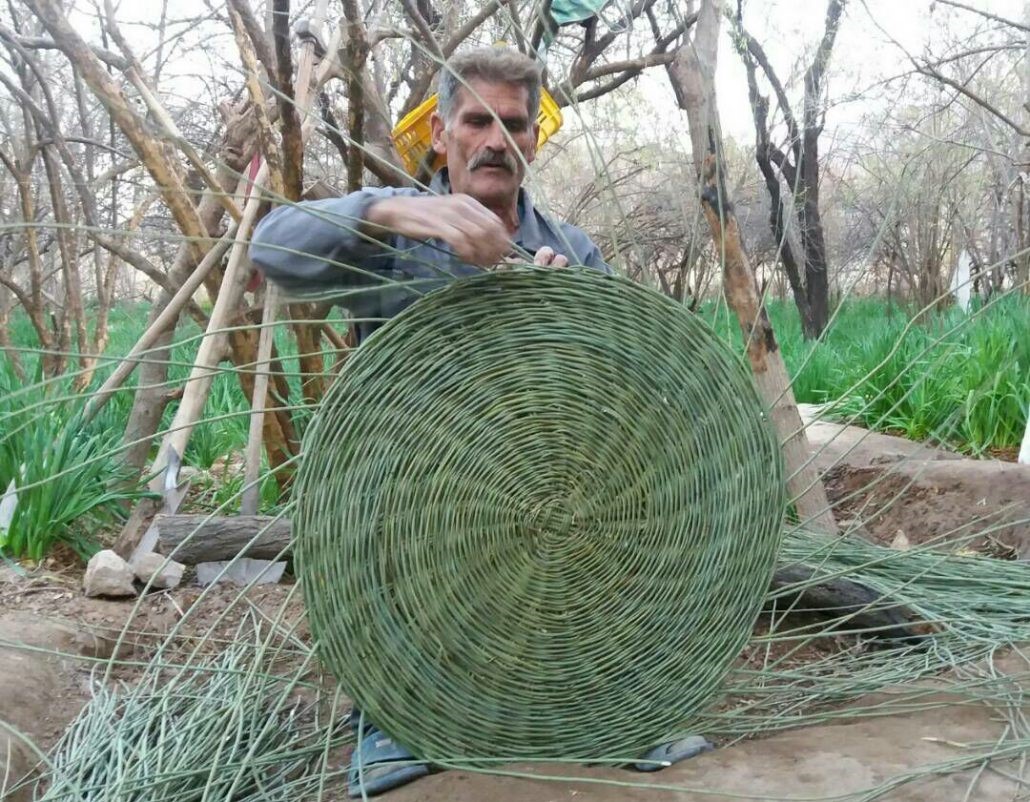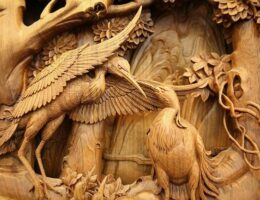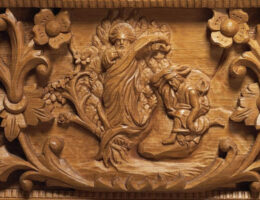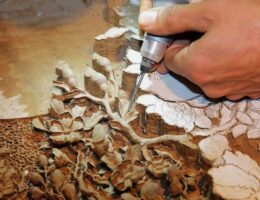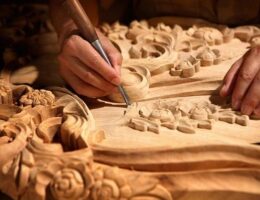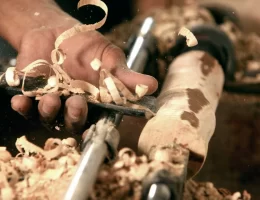IRAN ART EXHIBITION: THE USES AND MATERIALS OF MAT WEAVING OR HASIR-BAFI
In this article, we will discuss two handicrafts and industries of Iran, the mat weaving industry and traditional fiber clothing. You may find it interesting to know about the history of these ancient arts of Iran and get acquainted with more details.
Definition and history of the mat weaving industry
The mat is made of natural plants, fiber. Many years ago, Humans realized that they can make practical objects by flipping, tying, twisting, and weaving together plants ‘strands and fibers found in nature.
Mat is also found in other countries as their ancient and traditional art. in addition to the mat, The mat weaving industry in Iran produces other products. For example canopies, curtains, different types of baskets, bags, fans, and hats.
Mat weaving is an ancient art that comes back to 3500 years ago, there is a Monument that confirms the mat weaving industry’s antiquity.
Types of mats in Iran
The history of the mat weaving industry in Iran has a geographical expansion. Types of mats differ in forms and texture, it depends on the climate in which the mat is woven and also the type of plants that fibers are made of.
Mat weaving is a developing industry in both the northern and southern regions of Iran. For example, the materials which are used for the mat weaving in Gilan, Mazandaran, and in general in northern cities are rice stalks. While in southern mat weaving, palm fibers (palm trees) are mostly used.
In some areas, bark, wheat stalks, or straw may be used for mat weaving. different types of mats are called differently in each place., arqavan weaving, tarke weaving, tegard, capo, boria, bamboo, cham, chiq, lode, fassil are some of these names. all of them are considered as a kind of mat weaving that shows the art of Iranian weavers.
The mat is also divided into flat and bulky types. In a more detailed classification, the type of texture also determines its use.
Uses of mat weaving
We said that mats have two main categories, flat and bulky. They also have different textures and it mostly depends on the purpose of use.
Flat mats with a simple texture are used as mats or tablecloths. the Baluchi Tablecloths are an example of this category of mat weaving products.
Bulky mats that have a woven texture are extensively used for baskets and especially shopping baskets.
IRAN ART EXHIBITION: Flat mat weaving which has a radial and circular texture in small size is used as a table mat. The large size of this type of mat is used in tablecloths and mats.
Mat weavings that have a spiral texture are very thick and strong and have little flexibility and can be used as trays and containers.
Tools and materials that are used in the mat weaving industry
Today, mat weaving machines and devices make it easier to produce different types of mats in a large amount. Still, handicrafts are more charming and have a higher price.
Common tools that have been used in the mat weaving industry are:
– Special scissors for cutting wood;
– Awl to place excess strands in the tissue;
– Knife for cutting thick fibers
– Measuring instruments such as rulers and meters;
– A device( that has flame) for burning lint.
The mat weaving industry has products that are both practical and enchanting. These products are very valuable because of their authenticity and antiquity.
traditional fiber clothing of Iran
Traditional Clothes from different regions of Iran have unique features. The clothes of each ethnic group are related to the culture, beliefs, climate, and history of the people of that region.
People have used natural fibers (plants or animals) to make fabrics. so the fibers found in each area can determine the type of clothing. Also, the kind of fabrics that are made from natural fibers depends on the climate and lifestyles.
In some cold regions, people do their best to make thick fabrics made of natural fibers (usually wool) considering the climate of the region. In tropical areas, thin fabrics are made for clothing that is light and comfortable.
The design, the form, and the way that clothing is used and worn are also related to culture, climate, and lifestyle.
Traditional fiber clothing design
A complete set of traditional and local clothes has different components. Of course, the type of traditional clothing varies based on people’s gender. Traditional Iranian clothing in men’s and women’s types each has different characteristics.
In the traditional clothing of Iran, most parts of the body are completely covered by clothes. There is a kind of clothes called dashtashe that people in the south of IRAN ART EXHIBITION: Iran wear, it is a piece of fabric that covers the whole body. But in most places, traditional clothing for men is long coats with pants. In some climates, components such as vests, hats, belts or shawls, headbands, etc are added to traditional clothing and some of them are just accessories.
Women also usually wear long-sleeved dresses or a kind of blouse with skirts in addition to scarves and headbands to cover their hair. Some wear vests on their dresses. Or they may tie a scarf or shawl around their waist. The type of clothing and headbands women wear in some areas could determine whether they are married, single, or about to get married.
Components of traditional Iranian clothing in different climates can also indicate their lifestyle and occupation. In the past, the clothing design could indicate that people’s job is related to nature or generally physical jobs, the clothes of people who worked on farmland were different from those who raised livestock, or those who did fishing in the river, each had to wear clothes that were related to their job and life.
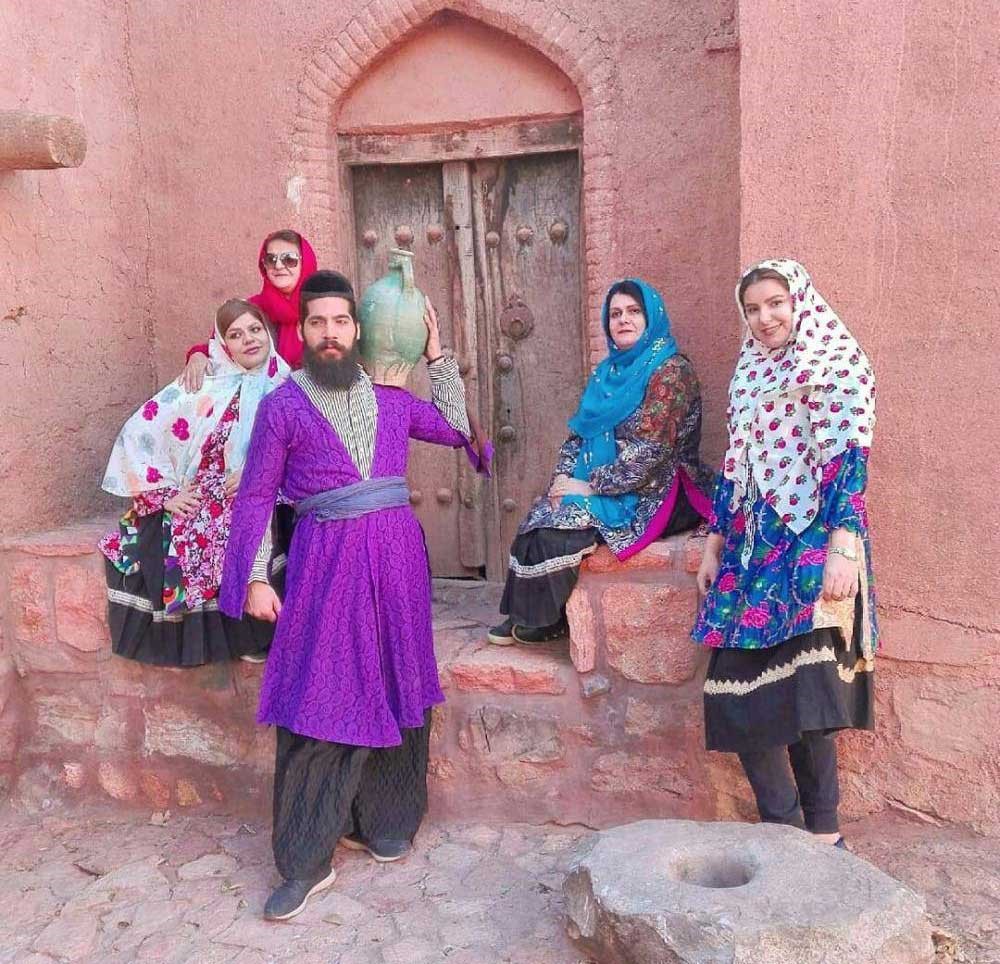
The fibers used in traditional clothing
We said that traditional fiber clothing can be varied in different regions. Obviously, this depends on the climate and the type of fiber that is most available in each region.
Nomads’ job is mainly raising livestock such as sheep or camels. so they make fabrics from the wool of their animals and sew clothes from these fabrics, Farmers can also use plant fibers such as cotton in addition to animal fiber for making fabrics.
IRAN ART EXHIBITION: Today, with the development of machines and devices and the expansion of communication people do not have to make fabric for their own use and wherever they are, they have easy access to different types of access. All kinds of fabrics are produced in textile factories. Various types of traditional clothing are also produced in workshops that are equipped with various machines for cutting and sewing fabrics. Traditional fiber clothing of Iran is very interesting for tourists from all around the world and also for Iranian. Tourists like to wear these clothes and experience the feelings and lives of the people who wear these clothes in that climate for a few minutes.
in This article, we learned that at first place the mat weaving industry and traditional fibers clothing was created to accomplish people’s needs in different climates of Iran, including carpeting, different types of container and clothing. The stages of producing these products have been a part of the lifestyle of the people of each region, which has also been influenced by the culture and climate of that area.
